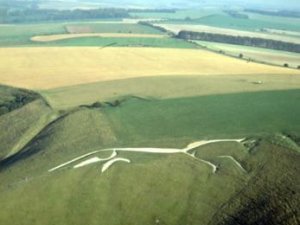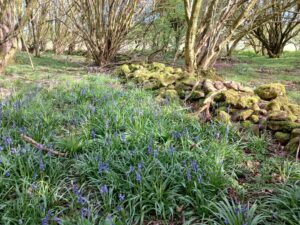
The Uffington White Horse is a unique prehistoric hill figure located in the Oxfordshire countryside, approximately 20 miles south-west of Oxford. The white horse is carved into the hillside using a process known as “scouring” which involves removing the topsoil to reveal the underlying chalk.
The horse is one of the oldest hill figures in Britain, dating back to the Bronze Age, and is believed to have been created around 3,000 years ago. It is one of only four prehistoric hill figures in the UK that are still visible today.

The Uffington White Horse is a significant cultural landmark and has inspired many myths and legends over the centuries. Some believe that the horse was created to honor a local king, while others believe it was created as a symbol of fertility or as a representation of a Celtic goddess.
The horse measures 110 meters from head to tail and can only be fully appreciated from the air. However, visitors to the site can still enjoy spectacular views of the horse from the surrounding hillsides. The site is managed by the National Trust and is open to the public year-round, free of charge.
In addition to the white horse, the Uffington area is home to a number of other interesting prehistoric sites, including the Uffington Castle hill fort and the Dragon Hill, a small hillock with a flat top that is believed to be the site where St George slayed the dragon.
Overall, the Uffington White Horse is a fascinating and iconic symbol of British heritage that is well worth a visit for anyone interested in history, culture, and the natural beauty of the English countryside.
The monument became very overgrown in the 19th Century and it has now been restored and is cared for by English Heritage.

The Uffington white horse can be found 1/2 mile due south of Uffington village on the Berkshire downs (although now in Oxfordshire). It is about 15 minutes from Lambourn.
Entry to the White Horse monument is free.




